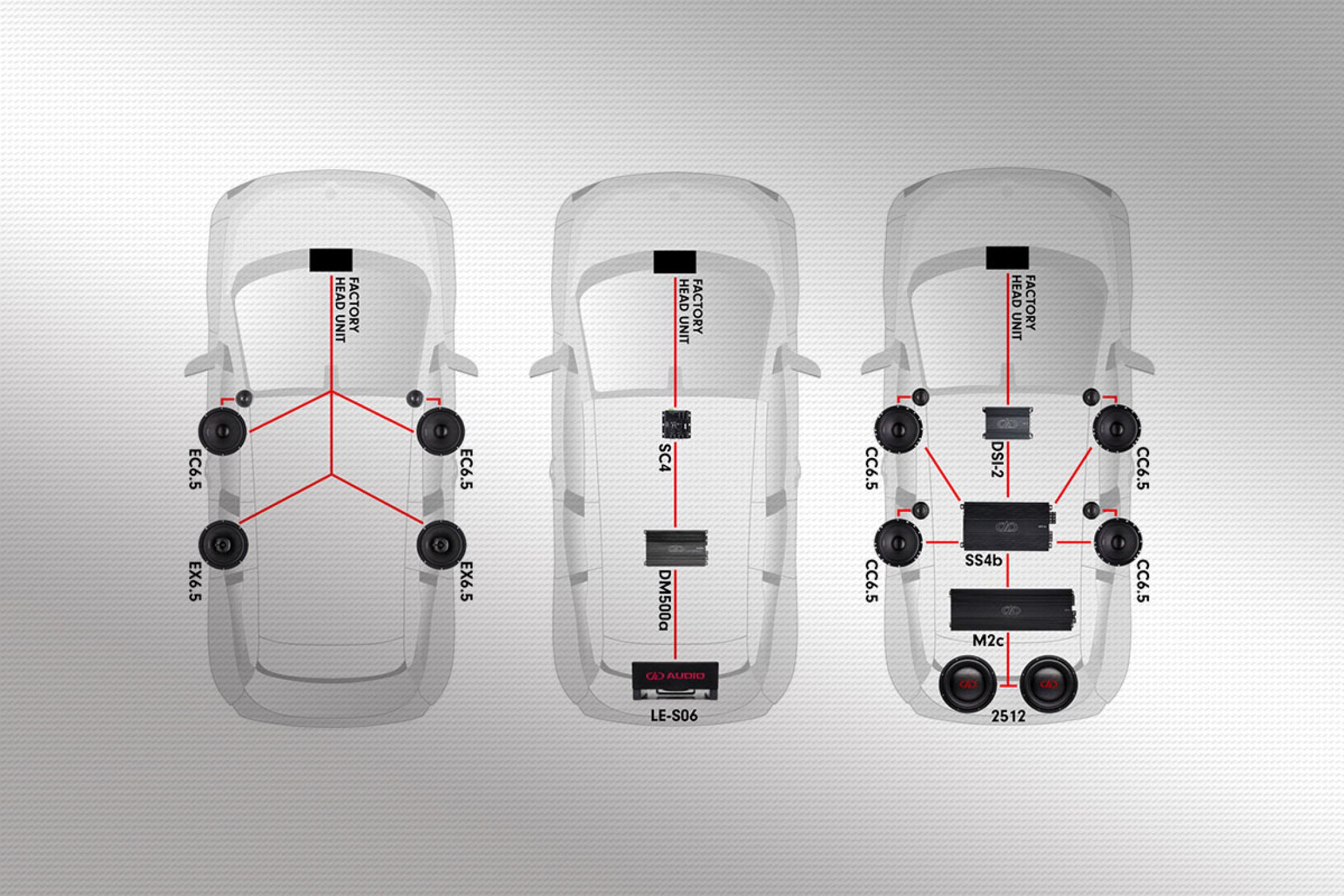
Equipment Choice Part Two: Set Performance Goals
In our last installment (Equipment Choice Part One) we looked at the potential pitfalls of launching into our new aural realm without first properly vetting our equipment to ensure it was, in fact, the right gear for the mission. This time around I’d like to back up to the beginning, and cover the very basics of equipment selection for every system, from the most modest to the unfathomable. The first thing you have to do when making the move toward Upgrading Your Sound is set performance goals for the upgrade.
The most frequent and cost effective way to foray into aftermarket audio is simply to replace the stock satellite speakers around the interior of the vehicle to a higher performance variant. There are a few factors to consider before choosing an aftermarket replacement:

Speaker Size
Modern automakers employ a wide range of speaker sizes ranging from tweeters as small as .75” in diameter, up to 10 and even 12” subwoofers. As you could imagine, they also use every size in between from 2.75”, 3.5”, 4”, 5.25”, 6.5”, 6.75”, 5”x7”, 6”x8”, 6”x9”, and even oddball sizes from yesteryear like 4”x10” speaker drivers to fit the audio bill from the factory.
Speaker Performance
Many of these speaker drivers are built solely with efficiency in mind, as they are charged with the steep task of making the most of the laughable power generated by many modern factory head units, and that is about all of the consideration they receive. The most basic of aftermarket models will typically outpace the performance from the factory offerings, even on the meager energy available from the factory source unit.

Type of speaker
For this reason, many entry level end users gravitate toward a low powered coaxial model of speaker (typically less than 50w RMS), which combines both a mid-woofer and tweeter in a single point source, allowing for greater frequency separation and clarity from the stock location with no modifications typically necessary. It is a quick, easy way to make marked improvements to the volume and clarity of the sound in the mobile environment. The most direct upgrade from a coaxial speaker is called a Component Set, and the title is literal. Rather than combine them in a single chassis, a component set is the individual components that comprise a coax setup broken down to the individual components, i.e. a midwoofer, a separate tweeter, and a crossover network to protect them. Component sets tend to offer not only superior performance from the individual drivers themselves, but also the ability to manipulate the soundstage by mounting the drivers in more advantageous positions in the vehicle, such as mounting the tweeter either higher up in the door, on the dash, or even behind the A-pillar covers. This allows for the perception of a broader and higher soundstage, making accurate reproduction much more attainable in the mobile environment.
Subwoofer (the BASS)
Now that we have decided to enhance the capabilities of the speakers around the periphery of the vehicle, it becomes more apparent that something seems to be missing. While not obvious to everyone immediately, that missing piece is the bottom 30% of your recorded music. The BASS! Lower frequency sounds are often overlooked entirely by manufacturers of automobiles, as they require both more cone area and more power to produce. Many automakers offer a progression of “Premium” or “Exclusive” audio packages for vehicles from the dealership, but dollar for dollar, rarely live up to expectations. To that end, what is one to do when trying to fill that bottom 30% back out in the sound from the stereo? The short answer is to add a subwoofer. There are, as with any aftermarket solutions, a plethora of methods of pulling this task off appropriately.
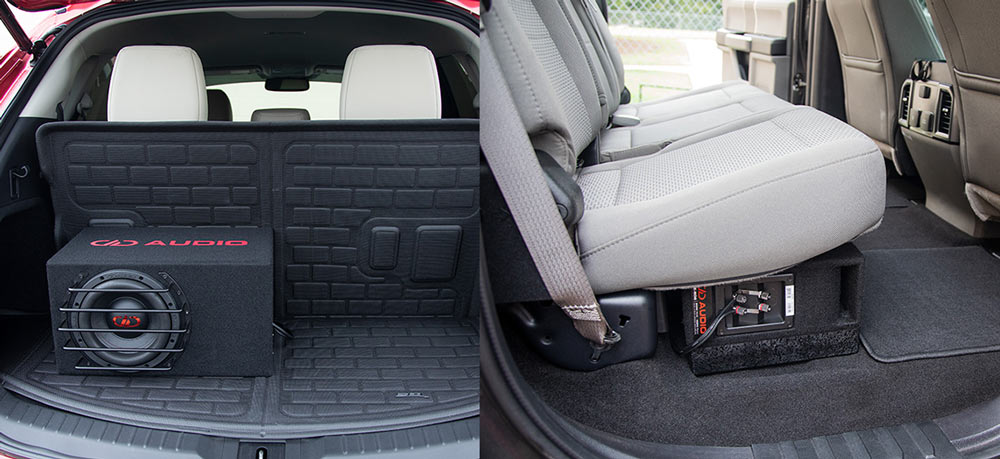
Prefabricated Subwoofer Enclosure
The least involved is to find a setup that can operate on the power generated by the vehicle’s factory amplifier. This is typically a fairly low powered endeavor, and in some cases can unfortunately be a bit of a lateral maneuver. The vast majority of end users opt to add an additional aftermarket amplifier to run a stand alone subwoofer, whether it be a Loaded Enclosure style prefab setup or something more bespoke to the vehicle, woofer, or both. Now, the amp chosen will vary substantially, and should be chosen carefully considering not only the power requirements of the subwoofer which will be driven by said amplifier, but the power requirements for the amplifier itself as well. Since subwoofers can vary greatly in both form and function, it is important to make certain to choose the right type of sub for your performance goals. Beginning with the Loaded Enclosure series, we have these entry level solutions to fit any vehicle, and they also require the least program power to add that bottom end back into the mobile listening environment.

Higher Powered Subwoofers
For those who prefer a bit more robust boost in their sub-bass regions, there are progressive power handling levels of our economically minded Redline Series of subwoofers, from the efficient low powered drivers offered in the Loaded enclosures to the lauded 700 series, a group of woofers aimed squarely at putting some serious beat in your ride without breaking the bank. For those who are of more refined tastes, or those with more restrictive levels of space to forfeit to subsonic transducers, we also offer the Hi Def Tuned line. These subwoofers boast a high level of efficiency all while not only maintaining the highest levels of audible fidelity, but doing so in scant volumes as well. Penultimately, for the street bass (or competition) hooligan in all of us, we have the Power Tuned series which comprises a wide swath of options from the high energy 1500 series to the “we’re going to need a new car after this” 9900 series, which range in power requirements from “oh, well that seems reasonable” all the way up to “well, looks like we need a mess more of those, that’s for sure”. Last, for the true zealot, we have our holy grail series, the Mythical Z series woofer of yore. If you have any desire to operate a woofer of this caliber, it needs no explanation.
Choosing an Amplifier
When looking for an amp to add to a vehicle, it is important to ensure the vehicle and amplifier can communicate. This may necessitate either an aftermarket head unit, or the use of converter, or signal processor to make the interaction possible. It is also crucial that the power requirements for the amplifier can be met, or risk not only damaging the amplifier itself, but potentially the vehicle itself as well. To determine what sort of amp, or amps are necessary for the system, again, we look to our goals at the onset.
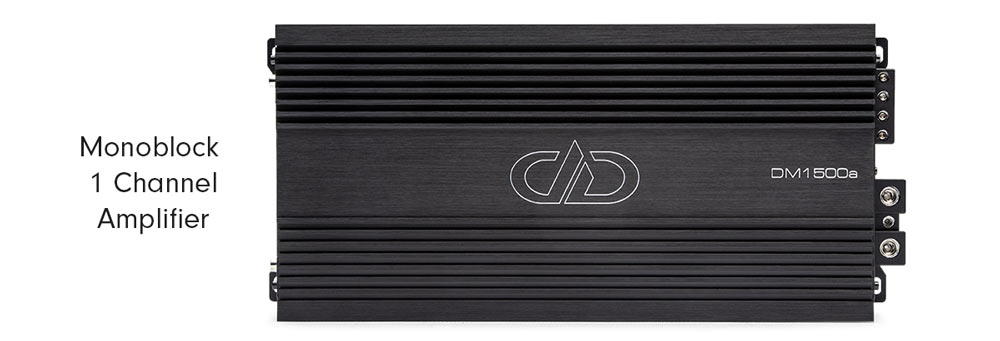
Monoblock (1 channel) Amplifier
If the goal was to simply firm up the low end reproduction now that the surround speakers have been replaced, a small monoblock (or one channel) amp will more than suffice for most end users. For some, amplifying only the subwoofer channel can cause an imbalance in sound, especially when relying on head unit power to drive the mid and high range drivers.
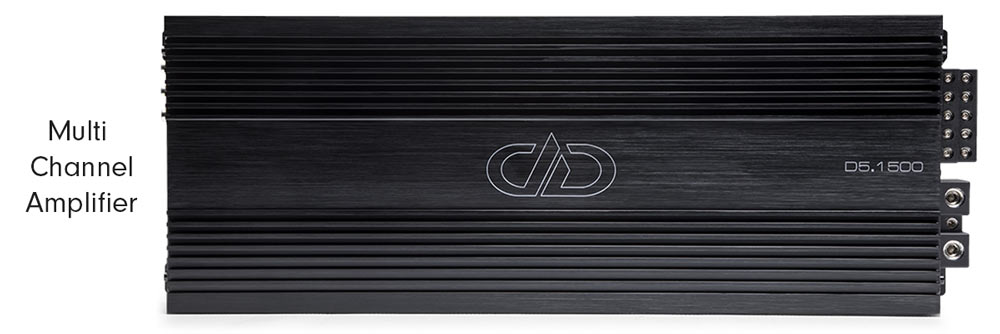
Multi Channel Amplifier
To this end, the move is to add either a stand alone multichannel full range amp as well, or a more comprehensive multichannel amp that also provides a substage output as well, such as the D5.1500. Five channel amps like these make for a single chassis, single install solution to powering a full system without the complication of multiple amplifiers. This allows the end user to bring the performance of all the speakers in the system up to their dynamic potential and really dial in the sound they are after with the system installed. Typically speaking, most folks don’t waste their time amplifying factory speakers, as it is a pretty rare find to come across factory speakers that will A: tolerate the power from an aftermarket setup, and B: sound better for it. Many factory amplified drivers are optimized for the power and application they are already being used in, and tend not to shine when forced to operate outside those parameters. For aftermarket speakers, as they get higher in the power handling range, the more they benefit from having additional power to drive them versus the factory setup. While a 7 watt per channel head unit can certainly drive a pair of coax drivers, having 25 watts on tap will allow them to play louder and with more clarity. Take that up a further notch to a component set and 100 watts, and the difference is incomparable. Making sure to have enough power to effectively run all of the drivers is key in full range amp selection for any system. For subwoofer amps, one of the biggest points to make is that it is crucial to make sure there is enough source power to feed the amp. Subwoofer amps tend to consume the most current from the charging system of the car, which makes sense as they also tend to be the most powerful amps found throughout the system. This will require another revisit of the system goals, to ensure that the choice of equipment will work successfully with the rest of the support equipment to ensure the longevity of the system.
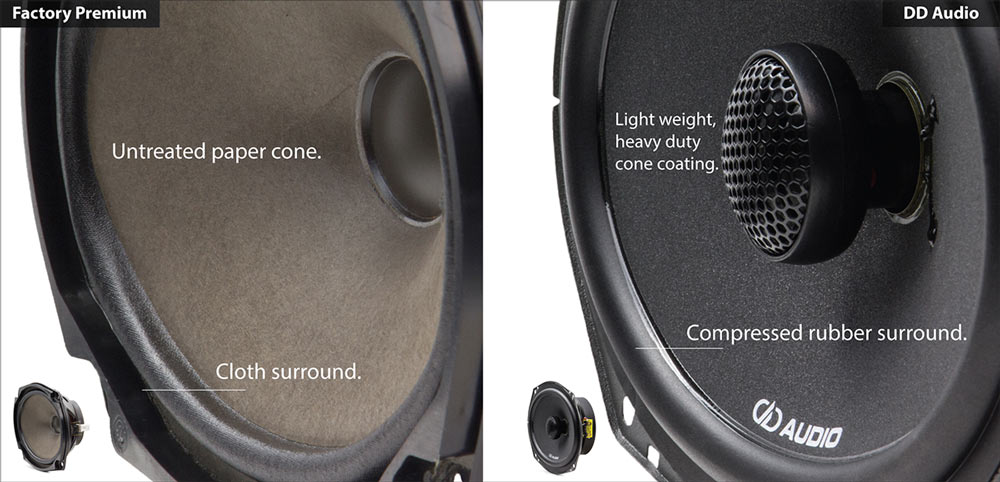
Some may wonder how these aftermarket setups fare against the so-called “Premium Sound System” offered by the dealership, often straight from the manufacturer. While they tend to outperform the base model setups offered with the vehicle from the plant, the vast majority of the “Premium” offerings are lackluster, at best. The value of a “Premium” system is simply not there. Costing up to THOUSANDS of dollars over the standard sticker price, the disparity in the performance of a “Premium” factory system to that of an aftermarket system of the same cost is staggering. There are steps that can be taken to enhance the sound from a factory “Premium” setup, such as properly sound dampening panels and using closed cell foam rings and diffraction pads to aid in directing the acoustic energies where they are best served, but for the expense and effort of all that, it is almost a no brainer to go ahead and simply upgrade the equipment while you are at it.
Now, it goes without saying that not everyone needs or wants to be a participant in a concert on wheels (their loss, I guess). For those of us who do not mind it, or even specifically seek it out, there are a lot of boxes that need to be checked to properly orchestrate a full concert experience build. This brings us back to our goals list, and how important it is to select a group of equipment that is complimentary of the rest of the devices, in order to not only allow for operation of the system in the immediate sense, but to provide long term reliability to enjoy the tunes for years to come. When most people think about what it takes to make a rolling concert, the undisputed first response is almost invariably “a ton of speakers”. Well, in order to properly orchestrate such a smattering of drivers, one has to determine not only the minimum number of amplified channels necessary to accomplish the goal, but also how to get signal appropriately to each of those driven channels.
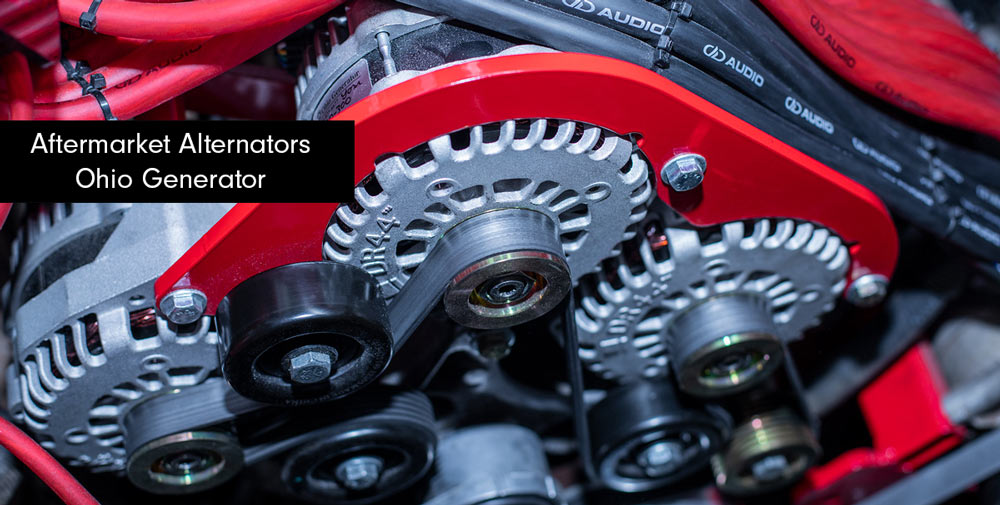
Other Aftermarket System Power Needs
There are many ways to achieve this, with the most popular being the use of either a Digital Signal Processor (DSP) or a powered line driver and splitter box combination. Both methods are equally effective, but the DSP gets the nod for tunability and versatility in the system. Once the signal has been divvied up among the full range amplified channels, it is important to determine what the substage will be comprised of. Once this is decided upon, we can determine the amount of power required to properly feed that substage. When this figure has been deciphered, we can now look at what the total system power needs are, and make sure to make the upgrades to the charging system of the vehicle to be able to handle the demand created by our venue on wheels. For audio setups truly worthy of the moniker “Rolling Concert” this may necessitate adding not only upgraded alternators, but often more than one of them. Battery choice is also crucial, as they often become the arbiter between the current draw of the amplifiers and the current production of the alternators in use for the automobile. There is a trade off here that must be shown the gravity it deserves, as the unsprung weight of a substantial battery bank can make or break a vehicle’s ability to move under its own power. The reason systems of this caliber are rarely attempted in anything but the biggest of SUVs and work vans does have to do with the space required, but is equally due to the requirement of a heavy duty vehicle to be able to transport the weight commanded by a truly breathtaking system.
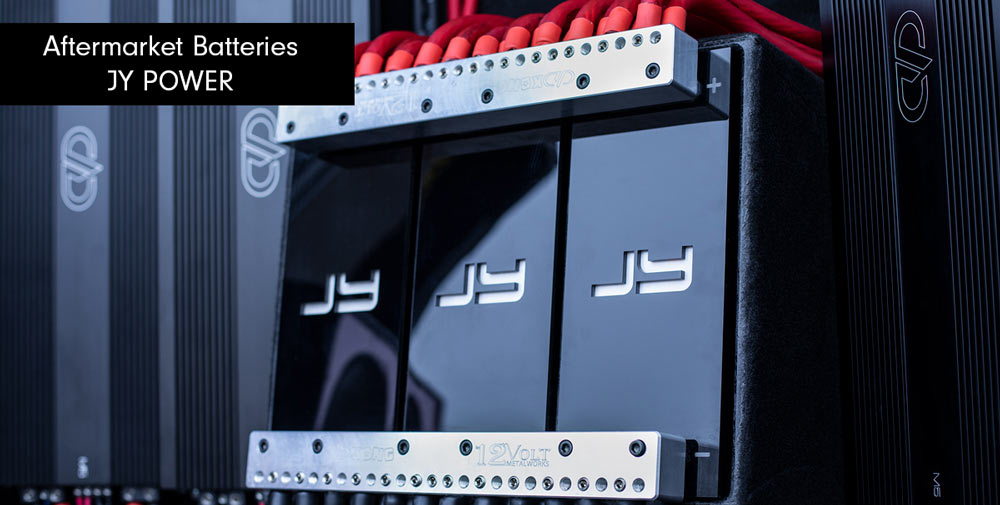
It is the harmonious interaction of the sum of these parts that allow we enthusiasts to enjoy our music at, well, questionable levels without fear of compromise, or damage as a result. Remove one part, the rest falls apart. This is why system component selection is so vital to any system. This is also why it is very important to really narrow down what the expectations are for the system, because it is quite easy to end up with less than you hoped, or more than you bargained for. With careful planning and research, the perfect system is attainable. You just have to determine your performance goals honestly and accurately, first.
Start your sound upgrade with our Car Audio Upgrade Guide